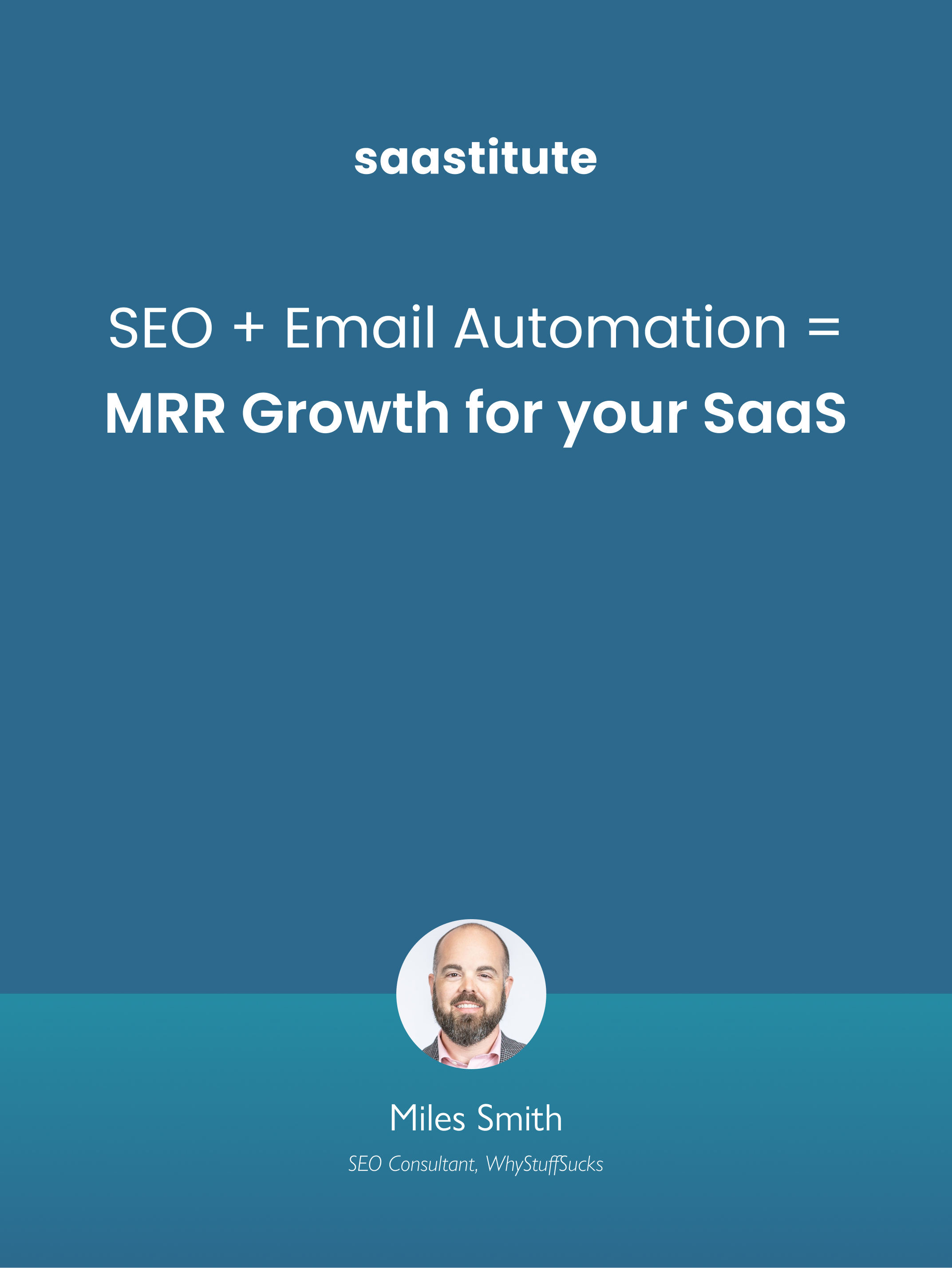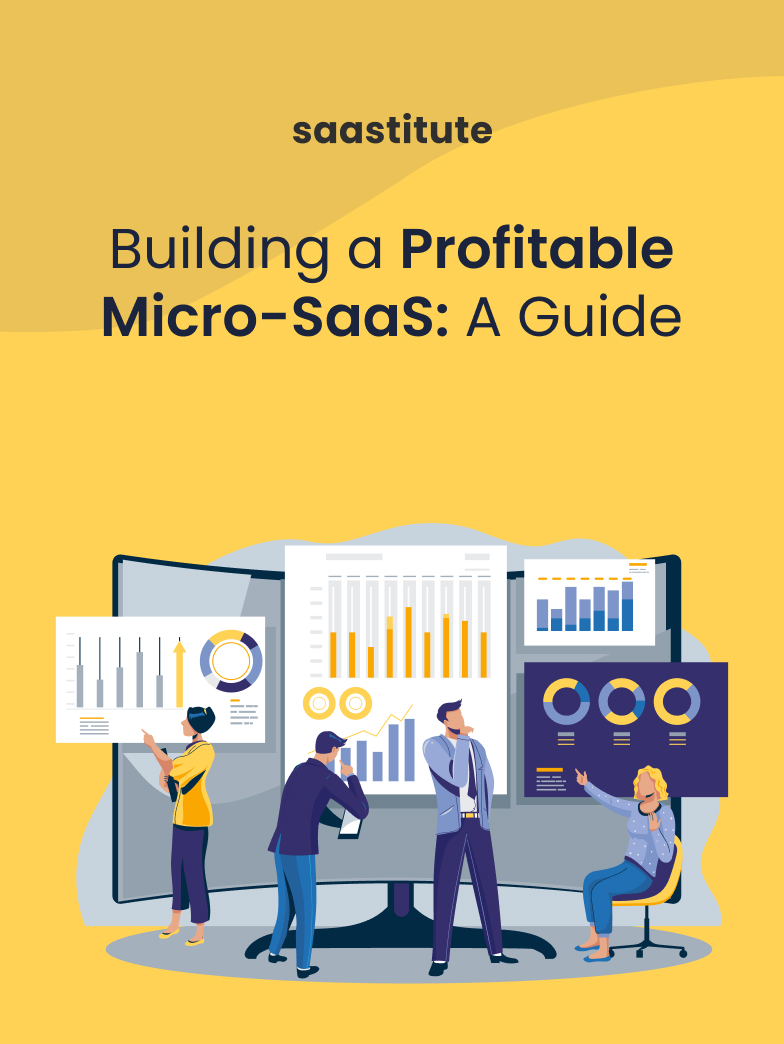B2B SaaS: Scaling your Business With an Effective Content Strategy
An effective content strategy can be an indispensable way to meet your growth goals like driving product adoption, reducing churns, and upselling. Here's a complete guide to get you started.

Are you a SaaS business hoping to generate genuine interest in your product? Or looking to optimize your conversion rates, among a thousand other growth goals? While your goals can be diverse, if you’re looking to scale effectively, creating a content strategy is key.
An effective content strategy can be an indispensable way to meet your up-scaling goals like driving product adoption, reducing churns, and upselling with creatively crafted content.

How Can I Scale the Content Strategy for my B2B SaaS at Speed?
McKinsey estimated that the Software-as-a-Service (SaaS) market would grow by 20% annually to reach $200 billion in value by 2024.
SaaS businesses thrive on clients who pay a monthly fee to access their software. However, generating recurring revenue from membership models can be challenging in modern competitive markets. Businesses do find it attractive to save massive capital expenditure like IT infrastructure and happily opt for SaaS products, but to retain these clients, in the long run, can be tough.
SaaS companies that build a strong branding and content marketing strategy can however stand out from the competition. Most SaaS businesses find it difficult to keep their audience up to date and highlight their competitive edge. It is only through well-planned branding and content curation that they can rise above the competition. Creatively crafted content nails brand positioning even in the most crowded marketplaces.
Content can help SaaS companies with brand positioning in their respective markets. However, as the business scales, there is a need to ship out more content and leverage more channels. Be it answering relevant pain points of a user, or investing time in thought leadership, a scalable content strategy not only helps you optimize lead generation but also keeps the customer acquisition costs low.
Three Stages of Scaling Businesses
Broadly speaking, most SaaS business models are categorized into three stages of operations and their content requirements change with the way they scale:
I. Startup
When a software business sets into action, develops a viable product and launches it to the market, the initial phase is called the startup phase. In this phase, companies also try to frantically acquire the first few customers for their SaaS business. They curate educational content at this stage to help their prospects understand about unique features and functionalities of their product. They push product knowledge through their content and attempt industry positioning by explaining their expert opinion on their client’s pain points. Content is served with the aim of customer targeting when the business is in the Start-up phase.
II. Mid-Market
SaaS products provide backends to their clients in return for the membership fees they charge. In the case of an affirmative response from the target market, the SaaS business will require to scale quickly. However, scaling is a highly cost-intensive routine that often involves reworking the content strategy to support the newly acquired customers. Content is built to scale conversion rates in this phase of business growth. The stage needs a push in terms of multimedia content like webinars, e-books, and other lead generation content. Brands that establish themselves as thought leaders in their markets attract new clients easily.
III. Community
In this particular stage, a SaaS business has evenly leveled out, profiteering healthily by acquiring new customers at a rapid rate. Such a company would have a very well-defined target audience and a reliable product with constant updates. They know what works for them and how to do just that. However, they must still publish content for customer retention in this stage and maintain their consistency in the process, to scale effectively.
7 Tips for Creating a Content Strategy
Depending on where a SaaS business is in its product lifecycle, it can use these strategies to scale its content at speed.
1. Plan a Content Calendar ahead of time
Writing, editing, and publishing everything all at once can be a bit painstaking while scaling speedily. Just because not everything can be at your fingertips, you need a detailed content calendar in place ahead of time.
Having a well-defined content calendar also helps synchronize and streamline workflow within the team. A content calendar helps avoid rushed projects without any compromises on content quality. Meticulous planning ahead of time also aids keyword research for the long term.
2. Have Individual Briefs or Outlines for Each Content Piece So That it Meets Its Target
Before green signaling the content scaling strategy for your saas and starting content creation, it’s best to have detailed outlines for each piece. Because writing freestyle slows the speed down and often leads a writer astray, it’s best to have pre-curated briefs for each. Detailed outlines can give a sense of desirable structure to your writing and help you stick to purpose as you scale.
3. Break Down the Actual Content Creation into Smaller Sections like Ideation, Draft Creation, Editing, Proofreading
Creating content involves multiple smaller steps that can be time-consuming. It involves basic research, keyword planning, drafting content, search engine optimization, and allied activities. To scale the content strategy without sacrificing quality, one has to divide it into smaller, more feasible, less time-consuming subsets.
4. Domain Expertise is Indispensable
Creating content that scales requires working with writers that ship out world-class content. It’s more than simply stringing some words together. It’s best to reach out to domain experts, who have first-hand knowledge of the things in your market.
Either find people that have leading blogs in the concerned industry and offer them an opportunity to co-author content with your brand. You can also look out for people that usually contribute to other sites in your domain.
5. Re-purpose Old Content
Content repurposing is an integral part of a B2B saas content strategy. As long as you have a single piece of well-curated content, you can repurpose it into multiple forms and use it to your advantage. Just like its name, evergreen content stays relevant regardless of the time it is being consumed by an industry professional.
Cleverly enough, a well-crafted blog post can be transformed into an interactive video as well. By changing the script to suit the requirements of a video, you can repackage the old content into a new form.
6. Centralized System for Tracking Progress of Content Creation
With content creation, deadlines are pristine. There are deadlines for drafting, revisions, and maybe graphic design too. To stick to pre-laid out plans use a tracking system. You can choose a simple project management tool for easy accessibility to the content creation calendars.
This way you can streamline your pipelines, track individual pieces of content through their journey of creation, as well as look at team workload and performance metrics. Such systems facilitate collaboration, as well as checks for quality and compliance during content operations.
7. Work With Subject Matter Experts
The best content strategy is when you get the content written on the basis of first-hand knowledge and experience. It not only promises a super-fast speed of content creation but also ensures 100% originality. Reach out to influencers in your target market and work out befitting social media strategies for content creation and promotion.
What to Do if You Reach a Saturation Point With the Content Strategy for your B2B SaaS?
Simply put, content is never enough.
There is always a new use case, a new persona, or a new target segment that is waiting to be leveraged in your content strategy and that can open up an array of opportunities for the business.
Also, brand positioning is an ongoing process that can be exhausting but still worth it. A brand that is out of sight risks going out of mind!
Conclusion
One has to keep re-inventing the content strategy for your business to scale. To save your business from being staid, stale, and predictable, constant evolution must aid content scaling.
A good content strategy would always be your guiding light when it comes to content creation allowing you enough headspace to craft new ideas and implement them.
It gives structure to idea generation. Regular ‘ideation’ sessions help you look beyond the existing ideas, and configure new approaches to getting your content in front of your audience.
Note: This article was first published by the author on Recurr's Medium blog page










.png)




.svg)


